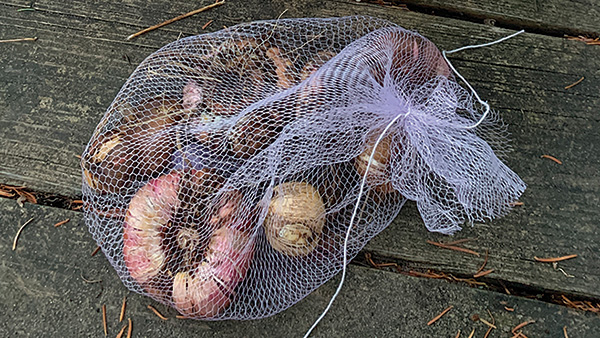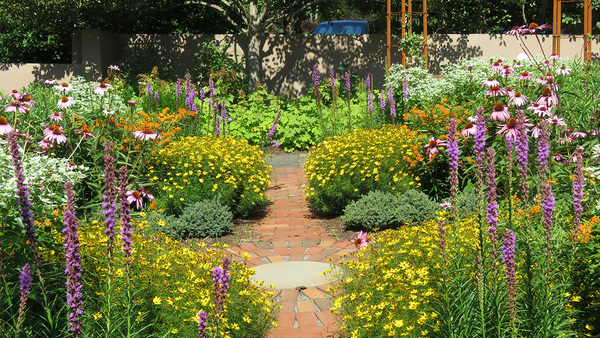
Have you ever noticed worker bees collecting water while they are out foraging? If you’d like to provide a water way-station for your little winged friends, fill a shallow dish with pebbles, marbles, or gravel, and then flood the dish with water. The marbles will provide safe landing spots for the bees so they can get a drink without falling into the water.
—Dell Salza, Shaker Heights, Ohio
Garden hose storage
I have found an easy and inexpensive way to hang a garden hose. Take an empty 3-pound coffee can, and screw or bolt it to a wall or other suitable surface. Be sure to use some large washers when you attach the can to give the back more strength. Attaching a bolt through the front top side of the can will help hold the hose in place. I’ve let my can naturally weather to a rust brown color, but you can also paint it to suit your garden location. Finally, the open end of the can may be used as a handy storage bin for sprinklers or hose nozzles.
—Christopher Patin, Clovis, California
Cologne as a deer deterrent
To keep deer away from my bedding plants, I soak the tops of bamboo sticks in strongly scented cologne. (I have found that men’s cologne works best.) I usually leave them to soak for two to three days in a plastic bag. Then I insert the bottoms of the sticks into soil near my plants. The sticks blend into the background, so I don’t need to hide them from view. The deer and raccoons stay far away! The scent lasts about a month, and I repeat the process as needed. Eventually, the deer just avoid the area. This tip also works for potted plants.
—Leslie Gault, Ashland, Oregon
Bag up invasive brush and vines
My garden is adjacent to a wetland, so removing invasive nonnative trees, shrubs, and perennials is a top priority. I have found that a 1-ton woven polypropylene bag—the type that is used for delivering sand, gravel, and other bulk materials—is the perfect container for gathering and transporting woody stems and vines. I can easily drag the bag around with me as I work, and when it is full I get help from a family member or neighbor to lift it into the bed of my pickup truck. From there, it is easy to dump the materials onto the brush pile at our local transfer station.
—Eileen Coomb, Torrington, Connecticut
Tiny seeds indoors
When planting tiny seeds indoors (e.g., poppies, petunias, strawberries, or thyme), I do not cover the seeds with soil. Seeds should not be buried more than twice their girth. Tiny seeds are better sprinkled over the soil surface. To prevent the seeds from being blown away or drying out, I cover them with a single layer of vermiculite and then water from the bottom of the container. The vermiculite swells with water and holds the seeds in place without compacting or stifling their growth.
—Mary Crum, Fort Myers, Florida
We need your gardening tips!
If you have a gardening tip, send it to [email protected]. We pay $25 for each tip we publish. The prize for the winning tip is a one-year subscription to Fine Gardening.
Fine Gardening Recommended Products

Berry & Bird Rabbiting Spade, Trenching Shovel
Fine Gardening receives a commission for items purchased through links on this site, including Amazon Associates and other affiliate advertising programs.

Attracting Beneficial Bugs to Your Garden, Revised and Updated Second Edition: A Natural Approach to Pest Control
Fine Gardening receives a commission for items purchased through links on this site, including Amazon Associates and other affiliate advertising programs.

Wagner's 52003 Classic Blend Wild Bird Food, 6-Pound Bag
Fine Gardening receives a commission for items purchased through links on this site, including Amazon Associates and other affiliate advertising programs.


















Comments
Log in or create an account to post a comment.
Sign up Log in